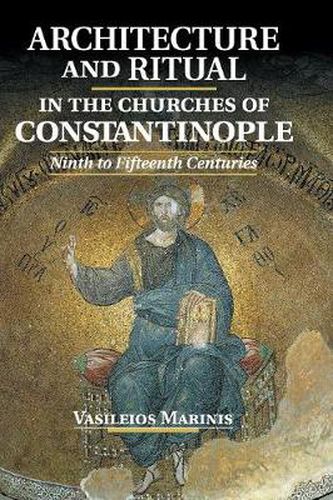Readings Newsletter
Become a Readings Member to make your shopping experience even easier.
Sign in or sign up for free!
You’re not far away from qualifying for FREE standard shipping within Australia
You’ve qualified for FREE standard shipping within Australia
The cart is loading…






This book examines the interchange of architecture and ritual in the Middle and Late Byzantine churches of Constantinople (ninth to fifteenth centuries). It employs archaeological and archival data, hagiographic and historical sources, liturgical texts and commentaries, and monastic typika and testaments to integrate the architecture of the medieval churches of Constantinople with liturgical and extra-liturgical practices and their continuously evolving social and cultural context. The book argues against the approach that has dominated Byzantine studies: that of functional determinism, the view that architectural form always follows liturgical function. Instead, proceeding chapter by chapter through the spaces of the Byzantine church, it investigates how architecture responded to the exigencies of the rituals, and how church spaces eventually acquired new uses. The church building is described in the context of the culture and people whose needs it was continually adapted to serve. Rather than viewing churches as frozen in time (usually the time when the last brick was laid), this study argues that they were social constructs and so were never finished, but continually evolving.
$9.00 standard shipping within Australia
FREE standard shipping within Australia for orders over $100.00
Express & International shipping calculated at checkout
This book examines the interchange of architecture and ritual in the Middle and Late Byzantine churches of Constantinople (ninth to fifteenth centuries). It employs archaeological and archival data, hagiographic and historical sources, liturgical texts and commentaries, and monastic typika and testaments to integrate the architecture of the medieval churches of Constantinople with liturgical and extra-liturgical practices and their continuously evolving social and cultural context. The book argues against the approach that has dominated Byzantine studies: that of functional determinism, the view that architectural form always follows liturgical function. Instead, proceeding chapter by chapter through the spaces of the Byzantine church, it investigates how architecture responded to the exigencies of the rituals, and how church spaces eventually acquired new uses. The church building is described in the context of the culture and people whose needs it was continually adapted to serve. Rather than viewing churches as frozen in time (usually the time when the last brick was laid), this study argues that they were social constructs and so were never finished, but continually evolving.